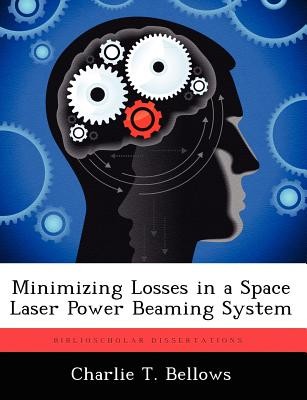
- We will send in 10–14 business days.
- Author: Charlie T Bellows
- Publisher: BiblioScholar
- ISBN-10: 1249588200
- ISBN-13: 9781249588207
- Format: 18.9 x 24.6 x 0.6 cm, softcover
- Language: English
- SAVE -10% with code: EXTRA
Minimizing Losses in a Space Laser Power Beaming System (e-book) (used book) | bookbook.eu
Reviews
Description
A mathematical model is developed to track the amount of power delivered in a wireless laser power beaming system. In a wireless system the power proceeds through several different stages before being delivered to a payload for use. Each of these stages results in power losses that are thoroughly examined, allowing for the calculation of the likely amount of power delivered. Adjusting variable factors within the model allows for the optimization of the system for a specific task. The model shows that an optimized wireless power transfer system can deliver enough power to meet the space experiment objectives. For example to power a Hall-Effect Thruster a laser, photovoltaic cells, satellite power distribution model, and batteries all impact the amount of power delivered. Careful selection of all of these components will allow the laser to power the thruster and the model provides how much power is transferred. Knowledge of the power requirements for the payload further allows the model to determine how long it will be able to operate the payload with the power provided. This model will allow system engineers to answer important design questions about the selection of components to ensure that the end product delivers maximum power.
EXTRA 10 % discount with code: EXTRA
The promotion ends in 19d.05:57:01
The discount code is valid when purchasing from 10 €. Discounts do not stack.
- Author: Charlie T Bellows
- Publisher: BiblioScholar
- ISBN-10: 1249588200
- ISBN-13: 9781249588207
- Format: 18.9 x 24.6 x 0.6 cm, softcover
- Language: English English
A mathematical model is developed to track the amount of power delivered in a wireless laser power beaming system. In a wireless system the power proceeds through several different stages before being delivered to a payload for use. Each of these stages results in power losses that are thoroughly examined, allowing for the calculation of the likely amount of power delivered. Adjusting variable factors within the model allows for the optimization of the system for a specific task. The model shows that an optimized wireless power transfer system can deliver enough power to meet the space experiment objectives. For example to power a Hall-Effect Thruster a laser, photovoltaic cells, satellite power distribution model, and batteries all impact the amount of power delivered. Careful selection of all of these components will allow the laser to power the thruster and the model provides how much power is transferred. Knowledge of the power requirements for the payload further allows the model to determine how long it will be able to operate the payload with the power provided. This model will allow system engineers to answer important design questions about the selection of components to ensure that the end product delivers maximum power.


Reviews